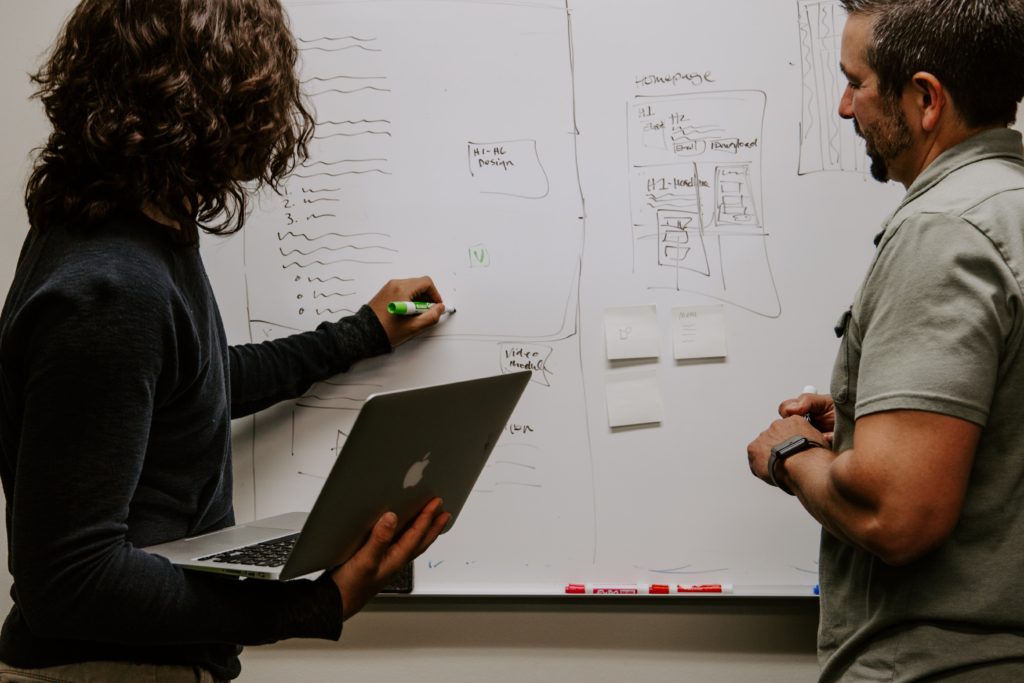What is Design Thinking?
Design Thinking is a user-centred approach to innovation and problem solving. Using five unique phases, Design Thinking methodology can be applied to all industries and organizations to reinforce innovation, solve problems, strengthen leadership and boost creativity, while helping users better understand their end-clients’ needs and provide the best possible services and solutions for their end-clients.
Why do my employees need Design Thinking training?
- Design Thinking reinforces innovation
Design thinking is a tool for innovation, providing a way to explore client needs that your end-users might not be aware of themselves. It then connects exploration to an innovative and collaborative process that ends in tangible prototypes that can be tested, tuned and verified.Design Thinking helps to ensure that you don’t start your innovative work heading off in the wrong direction, and can quickly iterate on potential solutions for the best fit.
Throughout each of the Five Phases of the Design Thinking process, individual employees and teams can generate new and innovative solutions answering clients’ real problems, therefore providing better service and helping your organization differentiate itself from competitors.
- Design Thinking is applicable to any industry or organization
Design Thinking is a methodology that can be applied to all organizations and departments, in both the public and private sector, regardless of their size, stage of development, industry, or geographical location.Whether you work for the Government, a non-profit, or own your own company, Design Thinking tools and methodologies will apply to your work.
- Design Thinking provides a roadmap to solve complex problems
Similar to the benefits of innovation, Design Thinking teaches employees to ideate on numerous solutions to a problem and select the best solutions to prototype and test, ensuring the problem is solved, regardless of its complexity.Design Thinking utilizes a number of methodologies, such as journey mapping and mind mapping, to create a roadmap towards your solution – identifying any levers or constraints that may affect the solution.

- Design Thinking finds working solutions
As mentioned above, Design Thinking calls on users to prototype and test potential solutions before implementation. This ensures that once implemented the proposed solution is feasible and will solve the challenge at hand.Design Thinking involves continuing to iterate and look for better ideas, even when a good one is found, to encourage more creativity and ensure the best solutions are tested and implemented.
- Design Thinking strengthens leadership
Leadership plays an important role in an organization’s capacity to understand and solve its end-clients’ problems, relying on leaders to have the tools to make the right decisions, but also the humility to start over when things don’t work.Teaching users to quickly iterate, Design Thinking can help leaders better understand client-generated data and transform problems into solutions and failure into success.
- Design Thinking improves knowledge sharing and collaboration
With a focus on empathy, Design Thinking improves buy-in for knowledge sharing initiatives by placing priority on employee and client concerns. Design Thinking also places emphasis on collaboration by creating multidisciplinary teams with expertise at each of the Five Phases.Similarly, the iterative approach to problem solving means Design Thinking can help organizations improve knowledge sharing around successes and best practices, as well as failures as a source of learning.

- Design Thinking boosts creativity
Rooted in brainstorming and ideation, Design Thinking asks users to put their most creative foot forward when problem solving. Innovative brainstorming techniques, such as role-playing can be applied to better understand end-users needs.Similarly, various activities such as journey mapping and mind mapping take users out of their traditional work elements and practices to better understand the barriers and levers they have for creative problem solving.
- Design Thinking helps you understand your end-client
To fully understand an end-clients’ needs is to understand their journey from start to finish with your organization or department.Design Thinking provides the tools and methodologies to make the journey toward your product or service as simple, clear, and efficient as possible for your end-user by revealing any pain points they experience and helping employees find, test and implement meaningful solutions to improve the client journey.
- Design Thinking improves decision making
Design Thinking is great for gathering information and ideating solutions to make better decisions that best fit your end-clients, however, the more information received the harder the decision-making process becomes. The key to dealing with the voluminous amounts of information is as simple as becoming discerning surrounding the filtering of various inputs.Design Teaching provides a number of methods and filters for decision-making; balancing data and information with gut instinct and voting methods, Design Thinking provides techniques that uproot the best user-centred solutions and help select the best output.
- Design Thinking will increase revenue
Placing emphasis on the end-user, Design Thinking is vital to improving customer experience. A report by The Economist Intelligence Unit found that companies that invest in customer experience have better revenue growth (59 per cent vs. 4 per cent) and are more profitable (64 per cent vs. 47 per cent) than companies where customer experience isn’t a priority.

How can I get my employees trained in Design Thinking?
Spring2 Innovation provides a number of Design Thinking training options. Make your employees certified design thinkers with a five-day Design Thinking Certification Program, or opt for a taste of Design Thinking with one-day training options. If you are looking for something tailored to your specific organization, department or project please contact info@spring2innovation.com to discuss custom training options.
